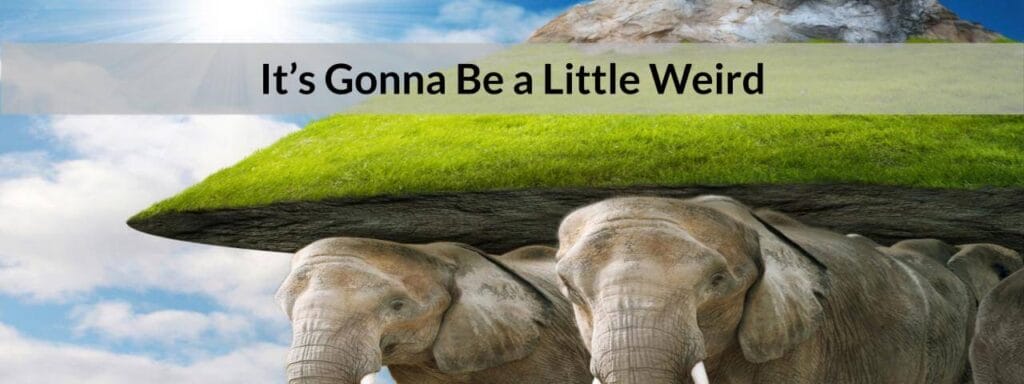Published: May 28, 2020
We know the world, including digital marketing, is continuing to shift on us. Digital Marketing has a tendency to do that even in “normal” situations, but we are seeing its fast-paced evolution even more now. Many of us are now trying to look ahead and figure out next steps, with a future that is relatively uncertain.
Although we can see the future (obviously, we’ve read our tea leaves, and we challenged ourselves to put together our best predictions for what remains of 2020.
Thanks to Richard Lesher, Carly Webber, Ben Waymire, Barb Dittert & Miranda Ryder for helping me put this together!
More of a skimmer? Here are the slides!
ASSUMPTIONS BEHIND OUR 2020 DIGITAL MARKETING PREDICTIONS
To take a stab at the future, we had to make a few assumptions:
Assumption # 1 – No New Normal in 2020
With a potential second wave of the virus, brewing international conflict, another recession plus an election, we’re anticipating that we aren’t going to hit a soft, smooth landing point this year.
Assumption # 2- Recession of Some Kind
Many economists agree that we have a high probability of a U.S. recession this year. In this model alone, Bloomberg Economics has predicted close to a 100% chance of a slowdown in the next 12 months.
WHAT WE’VE LEARNED FROM THE CRISIS
The high-anxiety times we’ve encountered this year, coupled with lowered consumer spending (GDP turned negative for the first time since 2014), means we all need to assess our marketing strategy. Thankfully, there are some essential takeaways we’ve gleaned from this year’s events, and we can apply them to your planning for the rest of 2020.
- The importance of stories – To explain complex topics quickly, especially when anxiety is high, single stories continue to resonate more with potential customers.
- Translating your company’s value/core beliefs in your marketing – Knowing why your company exists may never have been more critical than now. When you have to make fast decisions and communicate tough decisions empathetically, you have to have a “due north.”
- Crisis communication planning – With anxiety running high, even the most innocuous-seeming post on social media could flare negative backlash. Your team must have a quick policy in place of how to monitor and handle brewing issues.
- Shorter marketing plans – Many companies invest in significant annual planning policies to set marketing strategies and targets for the entire year. Now, marketing must adapt and create agile, flexible strategies that can pivot quickly.
- Identifying marketing “weak points” – Many organizations have realized they’ve become too reliant on a single set of tactics. When direct response ads or tradeshow marketing is the only significant driver of new client acquisition, you may have put all of your eggs in one basket.
- Email lists are more important than ever – Building your email database should be a significant KPI for every company. Brands have spent millions to gather social followers, but the truth is that these owned media channels are not quite as “owned” as we thought. The followers still belong to Facebook, not really to your brand. During the crisis, we experienced just how critical that email list is.
- Instant data sources – In constantly changing markets, we don’t have the luxury of tapping industry research, pulling keyword data, or launching in-depth competitive intelligence programs. Rapid feedback between customers, sales, and marketing will become more critical than ever.
- Budgeting & ROI – The marketing “nice-to-haves” will likely get separated from the “have-to-haves” as budgets get smaller and marketing gets more dialed in to deliver leads and sales. With a big microscope on money spent, attribution for producing revenue vs. other metrics will dictate a lot of marketing strategies.
HIGH-LEVEL PREDICTIONS
With all that said, here are some of our high-level predictions for the year:
- Messaging will be more critical than ever.
- Auto marketing programs (thin content and duplicate or basic social) are going to create more risk than they’re worth.
- Brands likely will produce less content, but that content will have to go through more of a microscope and be closely monitored.
- Marketers are going to have to learn to become both more innovative and more generalist.
- Many marketers will need to replace results from totally new channels & ideas, as many tactics that the business relied on (ie trade shows or conferences) may not be an option.
- Marketers are already used to the concept of producing more with less budget. With this trend becoming supercharged, marketers will need to become experts across the funnel, so that they can cost-effectively produce sales.
- Marketing strategies will need to be totally revamped.
- Marketing planning will be a lot more about KPIs and ideas vs. full annual plans with budgets.
- Marketers will need to be able to rely on their data while also needing to evaluate it impartially.
- There will likely be a push back toward direct response tactics, as those can yield results quicker and give more of an indication of what’s happening.
- Targeting will probably need to be re-evaluated.
- B2C: More brands are likely going to compete for a smaller market share of those who are still employed and have disposable income.
- B2B: We’re likely going to see a push towards targeting the more “recession-proof” industries.
- Low-cost “set it and forget it” marketing initiatives will likely stay paused, as they can create more harm than good in an uncertain climate.
- More Competition
- The competition will be more fierce. You should be expecting your competitors to:
-
-
- Launch new products
- Offer cheaper pricing
- Push more to digital marketing
- Publish a mountain of content they’ve been stockpiling during the crisis
-
- Utilize data and feedback loops
- Sales and marketing are going to be closer than ever (in some cases, the role might get combined), as both teams will be more motivated by sales KPIs more than ever.
- Large-scale industry reports and market research are likely going to be outdated and unable to keep pace with a rapidly changing market. Instead, marketers who need significant data will need to rely on their own Google Analytics or marketing tracking systems.
- Additionally, marketers will have to extract insights from customers and sales team members on a much more frequent basis.
DIGITAL MARKETING CHANNEL PREDICTIONS FOR 2020
What will happen to Search in 2020?
- Longer Buying Cycle – We’re already starting to see customers take more and more time to validate their purchases. With more steps in the buying process, more informational content will need to be available about your products or services.
- Direct to Consumer – For the past few years, we’ve watched the steady rise of Amazon. Some companies even question whether or not they need a website anymore. However, in the past few weeks, the relationship between Amazon and many brands has been shattered. Companies have realized the importance of building up their website sales outside of the e-commerce giant.
- Google SERP Design – Google continuously adjusts search engine result pages and, most recently, has made significant changes that favor paid ads and few brands. With Google Ad spend decreasing so much in the first quarter, we anticipate they will need to make up that shortfall. The most expedient way to do that is to provide more paid opportunities, likely to the detriment of organic visibility.
Our Slightly More “Out There” Prediction: Less than 50% of the Search Engine Result page will be organic listings by the end of 2020.
What will happen with social media in 2020?
- Ad Costs – Social media ads are going to provide a more critical platform to help brands connect with customers. Coupled with the fact that brands will be dialed in on ROI-generating channels, it’s a pretty safe bet that social ad costs will be higher.
- Tone & Content – This has been a significant issue as brands have quickly tried to shift from business as usual to crisis communication mode. With anxiety likely staying high in the coming months, maintaining a more authentic brand tone and voice will be the norm for brands. Additionally, there will probably be an increase in UGC.
- Innovation – With more brands likely pushing to digital and social, companies will have to challenge the underlying assumptions they are making about social platforms. To stay relevant, brands will likely have to branch out to new platforms and try new engagement tactics.
Our Slightly More “Out There” Prediction: TikTok is going to emerge as the official channel for connecting with Millennials.
What will happen with content in 2020?
- Video – While videos have been challenging to produce during quarantine, we predict this modality will continue to grow in popularity this year. Although trends related to authenticity, storytelling, and brand transparency were already on the rise, the video will become more critical than ever.
- Content Marketing – This should be an exciting year for content. Generally, content is the fuel for most digital marketing, so as your marketing pivots, so should your content. However, content production will likely move to lower-cost options, and brands may be more reluctant to invest in more significant pieces if they aren’t directly tied to ROI.
- Email Marketing – With email marketing having a 4X higher return on investment than any other digital marketing channel, it’s a fair bet that email will be a steady tactic in 2020. However, emails will need to be extremely tactful and tone-appropriate in the midst of a high-anxiety year. Here’s hoping we won’t see too many more COVID-19 policy updates and “We’re here for you” emails.
Our slightly more “out there” prediction – To own their customer list and to be able to share their content and offers, brands are going to start pushing away from their reliance on Amazon.
PREDICTIONS ON WHAT WON’T HAPPEN — BUT SHOULD (#OPPORTUNITIES)
As a bonus, we thought it would be useful to highlight which areas of digital marketing brands probably won’t focus on (but should). These might be an opportunity for your brand, too, so gather ‘round.
- Data-driven – The smartest companies are getting lined up with data, reporting, and metrics during this “down-time.” Many companies are not.
- Communication – Many are seeing the value in a crisis communication plan now, but many will not continue the plan until things go sideways again in the future.
- Competitor monitoring – Monitoring competitors can be costly and cause anxiety that many organizations don’t have the patience for, but that doesn’t mean it’s not important.
- Focusing on SEO – Competitors may stop focusing here and let it go on autopilot to save a few dollars. But not the smartest among us.
- Content promotion – A bunch of great content is about to get hurled out there, then when it doesn’t drive a bunch of results right away, brands will move on to something shinier. The best plan would be to stay the course for optimal content promotion.
- Giving Tactics Time to Work – Many times, when brands want to try a new idea or tactic in reaction mode, they don’t have the patience to let it play out. Time can be your marketing strategy’s friend, however.
WHAT ARE YOUR PREDICTIONS FOR THE REST OF 2020?
Let us know what you think. Do you agree with or have a crazy prediction of your own? We’d love to hear it!





